This Trans-Kalahari exploration begins in the breath-taking Kalahari Desert. You get to spend a few days experiencing the abundant yet sometimes elusive wildlife Botswana has to offer. Become enthralled learning about the native Bushman and the flora and fauna that sustains them including baobabs. Thereafter experience the Nxai Pan, a habitat rich in a diverse range of wildlife. Your journey will end in one of Africa’s 7 natural wonders, the Okavango Delta.
Departs: Maun, Botswana.
Ends: Maun, Botswana.
Group size: Guaranteed from 4 guests; 12 guests maximum. *Guaranteed departures with no minimum pax available, please enquire.
Summary
A small-group, lodge safari through Botswana, starting & ending in Maun.
Highlights
Maun, Central Kalahari, Planet Baobab & Nxai Pan or Ntwetwe Pan, Mokoro excursion, Game drive in the Moremi National Park, Khwai River area night game drive.
Meals
9x Breakfast, 7x Lunch, 7x Dinner. Where included breakfasts and dinners will be enjoyed in the restaurants of the various accommodation establishments, lunches will be arranged by the guide on driving days and excursions. Please advise us of any special dietary requirements in advance.
SAFARI
COST: Call for pricing.
SINGLE SUPPLEMENT: Call for pricing. |
|
|
DAY 1;
(1 Night)
MAUN, Botswana [Lodge] |
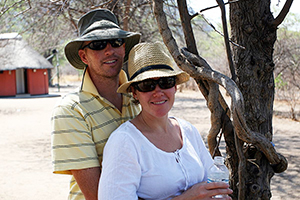 On arrival in Maun you will be met and transferred to Thamalakane River Lodge. The name Maun is derived from the San word “maung”, which means “the place of short reeds”. The afternoon is yours to spend at leisure, either relaxing next to the pool at the lodge or if you are keen for some excitement, why not book a scenic flight over the Okavango Delta. This evening you will meet your guide and the rest of your group at the lodge at 18h00 for your pre-departure meeting. On arrival in Maun you will be met and transferred to Thamalakane River Lodge. The name Maun is derived from the San word “maung”, which means “the place of short reeds”. The afternoon is yours to spend at leisure, either relaxing next to the pool at the lodge or if you are keen for some excitement, why not book a scenic flight over the Okavango Delta. This evening you will meet your guide and the rest of your group at the lodge at 18h00 for your pre-departure meeting.
|
Distance / Time: N/A
Overnight: Thamalakane River Lodge or similar (chalets with en-suite bathrooms, swimming pool & bar).
Meals: All meals at your own account.
|
DAYS 2 - 4;
(3 Nights)
MAUN TO CENTRAL KALAHARI, Botswana [Tented Camp] |
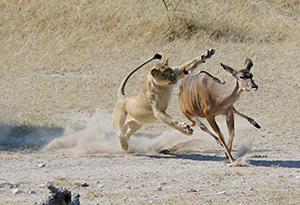 We proceed to the heart of Botswana, the central Kalahari Desert, where we enjoy a three night stay. The next days are spent on morning and afternoon game drives in the private concession and watching the abundant game in front of the camp. We embark on a Bushman Walk learning about the flora and fauna and the traditions of the Bushman. In the evenings you will have the opportunity to partake in night drives under the African sky. We proceed to the heart of Botswana, the central Kalahari Desert, where we enjoy a three night stay. The next days are spent on morning and afternoon game drives in the private concession and watching the abundant game in front of the camp. We embark on a Bushman Walk learning about the flora and fauna and the traditions of the Bushman. In the evenings you will have the opportunity to partake in night drives under the African sky.
|
Departure: 8am
Distance / Time: 230 kms
Overnight: Dinaka Safari Lodge or similar (permanent tents with ensuite open air bathrooms, swimming pool, dining & bar area).
Meals Day 2: Breakfast at Thamalakane River Lodge or similar, Lunch at Dinaka Safari Lodge or similar, Dinner at Dinaka Safari Lodge or similar.
Meals Day 3: Breakfast at Dinaka Safari Lodge or similar, Lunch pack from Dinaka Safari Lodge or similar, Dinner at Dinaka Safari Lodge or similar.
Meals Day 4: Breakfast at Dinaka Safari Lodge or similar, Lunch pack from Dinaka Safari Lodge or similar, Dinner at Dinaka Safari Lodge or similar.
|
DAY 5;
(1 Night)
MAUN, Botswana [Chalets] |
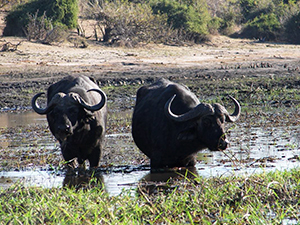 Today we travel back to the place where our adventure first started, Maun. Once here you have another opportunity to do the optional flight over the Delta or relax next to the pool at the lodge. Today we travel back to the place where our adventure first started, Maun. Once here you have another opportunity to do the optional flight over the Delta or relax next to the pool at the lodge.
|
Departure: 7am
Distance / Time: 230 kms
Overnight: Thamalakane River Lodge or similar (chalets with en-suite bathrooms, swimming pool & bar).
Meals: Breakfast at Dinaka Safari Lodge or similar, Lunch and Dinner at your own account. |
DAYS 6 - 7; (2 Nights)
MAUN TO PLANET BAOBAB, Botswana [Bakalanga Huts] |
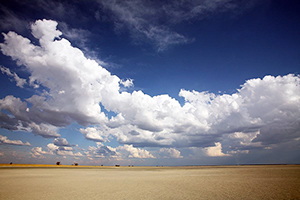 After breakfast we leave the Maun and head onto our accommodation for the next two nights, Planet Baobab. After settling in, we take a stroll with our guide through the surrounding baobab grove while he explains the local ecology, geology and the unique biology of the baobabs, which are in fact not trees but, the largest succulents in the world. The next day after breakfast, we depart for either Nxai Pan or Ntwetwe Pan. These excursions are seasonal based on wildlife sightings and road conditions. Both pans form part of the greater Makgadikgadi system. After breakfast we leave the Maun and head onto our accommodation for the next two nights, Planet Baobab. After settling in, we take a stroll with our guide through the surrounding baobab grove while he explains the local ecology, geology and the unique biology of the baobabs, which are in fact not trees but, the largest succulents in the world. The next day after breakfast, we depart for either Nxai Pan or Ntwetwe Pan. These excursions are seasonal based on wildlife sightings and road conditions. Both pans form part of the greater Makgadikgadi system.
Nxai Pan Excursion: January – May & December
An early departure takes us West towards Nxai Pan National Park. Nxai Pan adjoins the Makgadikgadi Pans National Park on its northern border. The pan itself is a fossil lake-bed about 15 sq. miles (40sq. km) in size. Covered in nutritious short grasses and small islands of acacia trees, Nxai Pan attracts vast numbers of desert herbivores such as gemsbok, springbuck, and extraordinarily large herds of giraffe, upto 30 in a group! In the South of the park are Baines’ Baobabs, a cluster of millennia-old baobab trees, named after the famous artist who discovered them in 1862, Thomas Baines. It is rare to see Baobab trees so close together and as one was growing on its side, Baines named his painting 'The Sleeping Five'. The famous explorers: The Green brothers passed this way too and to this day their inscription into the bark, 'Green's Expedition 1858 -1859, can clearly be seen. We return to the lodge in the late afternoon after exploring this unique area.
Ntwetwe Pan Excursion: June – November
The Ntwetwe Pan is one of the two major pans that make up the Makgadikgadi Pans, and is amongst the largest saltpans in the world. The pan was fed by the Boteti River until it was left permanently dry following the construction of the Mopipi Dam, which provides water for the diamond mines in Orapa. The waters may have returned to the river but Ntwetwe is now famous for its extraordinary lunar landscape, particularly the rocky outcrops, dunes, islets, and channels found along the western shore. We explore the area, in search of uniquely adapted desert species such as bat eared foxes, springbuck, kori bustards, and some of the Kalahari’s most fascinating inhabitants, the meerkats. We return to the lodge in the afternoon with some time to relax by the pool |
Departure: 8am
Distance / Time: 225 kms
Overnight: Planet Baobab or similar (Bakalanga hut with en-suite bathrooms, swimming pool & bar).
Meals Day 6: Breakfast at Thamalakane River Lodge or similar, Lunch prepared by the guide en-route, Dinner at Planet Baobab or similar.
Meals Day 7: Breakfast at Planet Baobab or similar, Picnic Lunch prepared by guide, Dinner at Planet Baobab or similar. |
DAY 8;
(1 Night)
PLANET BAOBAB TO KHWAI RIVER, Botswana [Semi-Permanent Tents] |
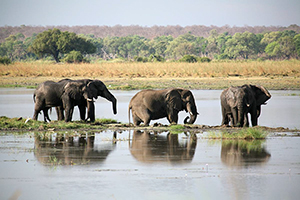 After breakfast we take a short drive to the mokoro station. From here, we will float in dug-out canoes through the thick vegetation of the Okavango Delta discovering a variety of birds and wildlife. Unlike other deltas, it flows into the Kalahari Desert without ever reaching the coast. After this spectacular excursion, we make our way to our camp, which is situated in the Khwai River region. After settling into our camp, we will enjoy dinner and embark on a night game drive in the concession – a fantastic opportunity to spot some nocturnal animals that are more difficult to encounter during the day. After breakfast we take a short drive to the mokoro station. From here, we will float in dug-out canoes through the thick vegetation of the Okavango Delta discovering a variety of birds and wildlife. Unlike other deltas, it flows into the Kalahari Desert without ever reaching the coast. After this spectacular excursion, we make our way to our camp, which is situated in the Khwai River region. After settling into our camp, we will enjoy dinner and embark on a night game drive in the concession – a fantastic opportunity to spot some nocturnal animals that are more difficult to encounter during the day.
|
Departure: 8am
Distance: 315 kms
Overnight: Khwai Bedouin Camp or similar (semi-permanent tented camp with en-suite bathrooms). Please note that there is no electricity at the camp.
Meals: Breakfast at Planet Baobab or similar, Lunch pack from Planet Baobab or similar, Dinner at Khwai Bedouin Camp or similar.
|
DAY 9; (1 Nights)
MOREMI GAME RESERVE, Botswana [Semi-Permanent Tents] |
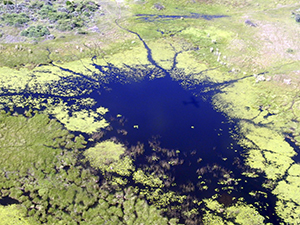 Today we head into the famous Moremi Game Reserve known as one of the most beautiful and varied reserves in Africa with an unprecedented concentration of wildlife. The full day is spent in the unspoiled nature of the Moremi Game Reserve. Today we head into the famous Moremi Game Reserve known as one of the most beautiful and varied reserves in Africa with an unprecedented concentration of wildlife. The full day is spent in the unspoiled nature of the Moremi Game Reserve.
|
Departure: 7am
Distance: 150 kms
Overnight: Khwai Bedouin Camp or similar (semi-permanent tented camp with en-suite bathrooms).
Meals: Breakfast at Khwai Bedouin Camp or similar, Lunch pack on game drive, Dinner at Khwai Bedouin Camp or similar.
|
DAY 10;
MAUN, BOTSWANA [END OF TOUR] |
Our safari ends after breakfast. You will be transferred to Maun Airport in time for your departure flight. We hope to welcome you again on another of our African adventures. |
Departure: 8am
Distance / Time: 150 kms
Overnight: N/A
Meals: Breakfast at Khwai Bedouin Camp or similar. |
Note: The accommodation specified in the itinerary is a guide only and is subject to availability. Alternatives will be nearby and of a similar standard.
OPTIONAL ADD-ON
3 Day Chobe National Park Package |
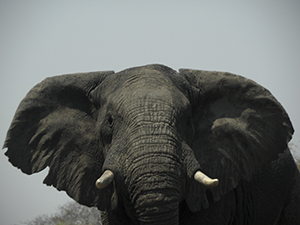 Experience the splendour of the Chobe National Park with 2 nights at Chobe watching wildlife from the water’s edge on sunset boat cruises and experiencing a host of wildlife on game drives in the National Park. Experience the splendour of the Chobe National Park with 2 nights at Chobe watching wildlife from the water’s edge on sunset boat cruises and experiencing a host of wildlife on game drives in the National Park.
Day 1: Flight from Maun Airport to Kasane. Arrive at one of the Chobe lodges (specific accommodation to be determined). Afternoon game viewing activity.
Day 2: Full day for game viewing on game drives and boat cruises.
Day 3: Morning activity. Airport transfer after breakfast. Tour ends. |
Overnights: 2 nights at a selected Chobe lodge (TBD). |
 Top Top
Included
Nine nights in fixed accommodation, all transport in fully kitted 4x4 safari vehicle, game drives as mentioned, meals and activities as mentioned in itinerary, park entrance fees, experienced local guide.
Excluded
Travel insurance, flights, pre and post tour accommodation, optional activities, all drinks, telephone calls, gratuities, curios and all personal expenses.
Departure
The Trans-Kalahari Lodge Explorer tour departs from Thamalakane River Lodge in Maun, Botswana.
Please note that the daily departure times are a guideline only and are subject to
change due to seasonal variations, as well as unforeseen circumstances. The final
decision rests with your guide who will advise you at what time you will be departing
each day.
On the evening of Day 1, there will be a meeting presented by your guide, at 18h00, at Thamalakane River Lodge. It is imperative that all clients attend this meeting so as not to miss out on any critical information.
Whilst it is our every intention to adhere to the above mentioned itinerary, there may on occasion be a necessity to make alterations in order to make the tour more enjoyable or practical. Therefore please treat the itinerary as a guide only.
Transport
Fully equipped open sided 4x4 Land Cruisers or other appropriate vehicles with comfortable seating for maximum game viewing. All luggage, besides hand luggage and photo equipment, is carried on the vehicle or trailer roof racks to ensure maximum comfort in the vehicle.
Travelling Times and Distances
All travelling times are affected by road conditions, border crossings, detours and weather conditions, therefore on certain days travelling times may be longer than anticipated especially where there is a lot of distance to be covered. Please keep in mind that the time it takes to travel 100 km in your home country is not equivalent to the time it takes to travel 100 km on African roads, therefore we encourage you to sit back
and enjoy the spectacular scenery Africa has to offer. Where possible additional stops
will be made to ensure your travelling comfort at all times.
Accommodation
We make use of mid-range typical African standard lodge accommodation. Accommodation is situated either in National Parks, on the banks of a river, or in other places of interest. The accommodation will be a mix of lodges, chalets and tented camps. All of them have a private bathroom with a shower or bath and a toilet. Some properties are equipped with swimming pools and/or bar areas.
Visas
The onus is on the client to organize all visas required to visit Botswana prior to departure.
Information on Areas Visited
BOTSWANA
The San were among the first human inhabitants of this region before the Setswana migrated southwards and slowly occupied the region from the 16th century onwards, until early in the 19th century. By mid-century missionaries arrived, including David Livingstone and Robert Moffat, and by 1885 the territory was a British protectorate. Botswana gained its independence in 1966 and has been the most stable democracy in Africa. The first president ruled from 1966 until his death in 1980, the second till 1994 (re-elected twice, then resigned) and the third from 1998.
The country has a strong currency with one of the highest per capita incomes in Africa,
maintains a neutral international political stance. It is heavily reliant on mining (especially
diamonds) & tourism and maintains close ties with its neighbor South Africa, an economic
powerhouse for the region.
Wildlife is abundant in Botswana and includes lion, giraffe, leopard, antelope, elephant, crocodile and ostriches. Botswana is semiarid and has an average annual (summer)
rainfall of 640 mm (about 25 in) in the north to less than 230 mm (less than 9 in) in the
Kalahari. Drought is therefore not uncommon and the vegetation is mostly savannah.
Geographically Botswana is relatively flat (the average elevation of about 1000 m) and
can be viewed (for all intents and purposes) as three major regions as follows:
Chobe National Park in the north, another outstanding wilderness area of enormous
diversity – lion and elephant can be viewed from river cruises or 4x4 game drives.
The Okavango Delta is a vast marshland and one of the largest inland river deltas in the
world – 15 000 km2 of wilderness and prime safari area. The Kalahari Desert in the central
and southwestern regions occupies over half the land area of Botswana. It is a mystical,
harsh and unspoiled landmass. The saltpans of north-central Botswana and the Tuli block in the far eastern corner of
Botswana are also areas of significance.
Maun
Maun is the gateway to the Okavango Delta and one of the best safari experiences you will have. Countless safari and air-charter operators have offices here, thus it is busy with people coming and going especially around the airport. The best time to go is during the winter months from May to October when there is little or no rainfall and the days are warm and cloudless. Nights can be cold though so take a jacket. November to April can be very hot, with most of the rainfall between December and February.
Maun has developed rapidly from a rural frontier town and has spread along the wide Thamalakane River. It now boasts good shopping centres, hotels and lodges as well as car and 4x4 vehicle hire. However, it still retains a rural atmosphere and local tribesmen still bring their cattle here to sell and you could see antelopes grazing the riverbanks.
Okavango Delta
The Okavango Delta in northern Botswana near Maun incorporates the Moremi Game
Reserve and is a unique wildlife paradise - one of the finest in the world. It is one of the
largest inland river deltas in the world. This unsurpassed natural environment is a maze of
waterways, islands and reed banks creating a perfect place for lion, elephant, leopard,
buffalo, giraffe, hyena, wild dog, kudu, impala, roan, zebra, lechwe, hippo, and
crocodile, amongst others. There are 440 bird species in the delta and fish species are
also abundant, including tiger fish, sharp-toothed catfish, barbell and bream.
Travel through the swamps ands surrounding areas is generally by open 4x4 game
viewing vehicle or a peaceful meander in a 'Mokoro', a flat-bottomed dugout canoe.
The Delta is hot throughout the year with temperatures ranging from about 14°C in
January to 24°C in July. Rainfall averages 525 mm annually, but varies greatly from year
to year. Water levels and flooding reach a maximum between March and July, after
rains at the source and the usual 15 000 km2 can expand to approximately 22 000 km2 in
high-rainfall years.
Moremi
In the centre of the Okavango Delta is the Moremi Wildlife Reserve, a 3,000 km2 paradise. Proclaimed a wildlife reserve by the Tswana people in 1963, Moremi is undoubtedly one of the world's most pristine wilderness areas. The foresight of the local community has ensured that nature has flourished undisturbed, offering a glimpse of the divine, a veritable Garden of Eden. Moremi is a place of lily-covered wetlands, grass plains and forests, where even at the busiest time of year you're likely to be the only spectators at a most dramatic animal sighting.
Moremi consists of a network of waterways surrounding two large islands, Chiefs Island in the west and Mopane Tongue in the east. The area's diverse ecosystems, riverine woodland, flood plains, wetlands and reed beds, mopane forest and dry savannah woodland are all flourishing, broken only by the occasional jeep track. This diversity of habitats provides rich pickings for an impressive variety of animals and around 550 bird species. As Moremi is a fenced reserve, game viewing is impressive throughout the year. However, the cool dry winter months from March to September are an ideal time to visit, as the chances of seeing lion, elephant, leopard, hyena, eland, kudu, roan antelope, giraffe, zebra, impala and buffalo are excellent. On the sandy riverbanks and wetlands, sightings of hippo and crocodile are commonplace.
Central Kalahari
The Kalahari Desert offers untamed Africa in its most untouched state. This arid to semi-arid landscape is not what one would commonly associate with a desert, featuring areas of flat grasslands and acacia trees with huge tracts of excellent gazing after good rains. The san Bushmen inhabited these lands for over 20,000 years, roaming as nomadic travellers, taking only as needed from this harsh dry landscape. The Central Kalahari Game Reserve is the world?s second largest protected area and supports a large variety of animals, such as brown hyenas, lions, meerkats, giraffes, warthog and several species of antelope, birds and reptiles. Over 400 plant species have been identified, including the wild watermelon. In December the springbok birthing season results in increased predator action but the central Kalahari offers year round good game viewing. Learn the lifestyle and survival skill of the San bushman from the sources and experience what nomadic life would be like.
Nxai Pan
Situated in north-eastern Botswana, Nxai Pan is one of three saltpans that make up the larger Makgadikgadi Pan. The saltpans are all that remain of Lake Makgadikgadi, which dried up several thousand years ago. Nxai Pan is a salty desert surrounded by salt marshes, which spread into grasslands and shrubby savannah with prominent baobab trees. During the dry season, Naxi Pan is very barren of both plant and wild life, with ostriches, kittlitz's plover and chestnut-banded plover being the only common residents. The fringed grasslands house various reptiles such as tortoises, snakes, lizards – notably the endemic Makgadikgadi spiny agama - and rock monitors. In the rainy season, the pan is transformed as various migratory birds and wildlife arrive along with the rains. The pans host one of Africa's biggest zebra populations as well as wildebeest, buffalo and elephants and, of course, all the predators that prey upon them. Birdlife in the wet season are various duck and geese species, as well as the great white pelican. The pan is home to the only breeding population in Southern Africa of greater flamingos. A notable sight is Baines' Baobabs, a large stand of baobabs marooned on a saltpan island. The dry season waterhole in Nxai Pans National Park makes for simple game viewing in the winter months and a great spot to view a great mix of the desert and savannah animals that the Park holds.
Chobe National Park
Chobe is approx. 11 000 km2 of wilderness area watered by the Chobe & Savuti Rivers
and thus attracting huge concentrations of game. This includes lion and some of the
highest concentration of elephant in Africa – an estimated population of around 25 000
in winter. Game viewing is renowned and in the Northern areas near Kasane, both the
riverboat game viewing experience and the 4x4 vehicle option are popular.
In addition the spectacular annual summer migrations of plains game, especially Zebra,
is a highlight, as well Giraffe, Warthog and numerous antelope including Sable, Roan,
Oribi, Reedbuck, Lechwe and the colourful Chobe Bushbuck.
Bird watching opportunities in Chobe are ample and include some 350 species including
the awesome African Fish Eagle, the rare Pel's Fishing Owl, saddle-billed storks, long-toed
Plovers, pink-backed Pelicans, African Skimmers, Bradfield's Hornbills and Carmine Bee-eaters.
In addition, the sunsets are spectacular.
 Top Top  Return to Budget Safari Packages Return to Budget Safari Packages
|